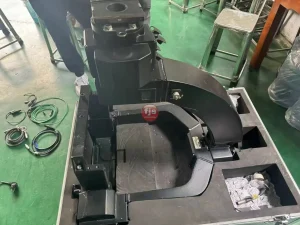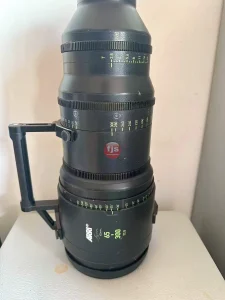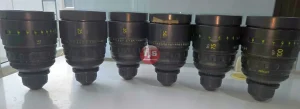Introduction:
Cinematic Lenses: Unlocking the Power of Visual Storytelling
When it comes to filmmaking, one cannot underestimate the importance of cinematic lenses. These remarkable pieces of equipment have the power to transform a simple shot into a visually captivating masterpiece. Whether you are a seasoned filmmaker or just starting out, understanding the different types of lenses and their unique features is crucial for creating compelling cinematic experiences. In this article, we will explore the key features and benefits of cinematic lenses, answering all your burning questions along the way.
Outline:
- What are cinematic lenses and why are they important?
- What are the different types of cinematic lenses?
- What are the key features to consider when choosing a cinematic lens?
- How do different types of cinematic lenses affect the final look of a film?
- What are the benefits of investing in high-quality cinematic lenses?
- Conclusion
- What are cinematic lenses and why are they important?
Cinematic lenses, also known as camera lenses or cinematography lenses, are specialized optical tools used in filmmaking to capture images with a specific field of view, focal length, and aperture. These lenses play a crucial role in shaping the visual language of a film, allowing filmmakers to convey emotions, set the mood, and tell their stories with precision. By carefully selecting the right cinematic lens, filmmakers can enhance the overall cinematic experience for their audience. - What are the different types of cinematic lenses?
a) Prime Lenses: These lenses have a fixed focal length, offering excellent image quality and low-light performance. Prime lenses are popular among filmmakers for their ability to create a shallow depth of field and a more intimate look.
b) Zoom Lenses: Unlike prime lenses, zoom lenses have a variable focal length, allowing filmmakers to adjust their framing without changing the lens itself. These lenses offer versatility and convenience in capturing various shots without the need for lens changes.
c) Anamorphic Lenses: Anamorphic lenses are widely used to achieve a widescreen aspect ratio and a unique, cinematic look. These lenses create horizontal lens flares and characteristic oval bokeh, adding a sense of visual grandeur to the footage. - What are the key features to consider when choosing a cinematic lens?
a) Focal Length: The focal length determines the field of view and magnification of the lens. Shorter focal lengths capture more of the scene, while longer focal lengths bring distant subjects closer. Understanding your desired shot composition will help you choose the appropriate focal length.
b) Aperture: The aperture controls the amount of light entering the lens. A wider aperture (lower f-stop number) allows for better low-light performance and creates a shallow depth of field, blurring the background and emphasizing the subject.
c) Image Stabilization: Some lenses feature built-in image stabilization, reducing camera shake and ensuring smoother footage, especially when shooting handheld or in challenging conditions.
d) Lens Coating: Lens coatings reduce lens flare and ghosting by minimizing reflections and improving contrast. High-quality lenses often have multiple coatings to enhance image quality. - How do different types of cinematic lenses affect the final look of a film?
Each type of cinematic lens mentioned earlier contributes to the overall visual aesthetic of a film in its own way. Prime lenses, with their fixed focal lengths, can create a more intimate and realistic look, while zoom lenses offer flexibility in capturing different perspectives. Anamorphic lenses, on the other hand, provide a distinct widescreen aspect ratio and a vintage, cinematic feel that is highly sought after by filmmakers. - What are the benefits of investing in high-quality cinematic lenses?
Investing in high-quality cinematic lenses can significantly impact the overall quality of your film. These lenses are designed with precision optics, resulting in sharper images, better color reproduction, and reduced distortion. Additionally, they often have wider apertures, allowing for better low-light performance and depth of field control. By investing in lenses that meet your specific filmmaking needs, you can elevate the visual storytelling of your films to new heights.
Conclusion:
Cinematic lenses are the unsung heroes of filmmaking, allowing filmmakers to bring their creative visions to life on the screen. By understanding the different types of lenses, their unique features, and how they shape the final look of a film, you can make informed decisions when choosing the right lens for your project. Investing in high-quality cinematic lenses can transform ordinary shots into visually captivating moments, ensuring that your audience remains engaged throughout the cinematic journey. So, next time you embark on a filmmaking adventure, consider the power of cinematic lenses and unlock the true potential of your visual storytelling.
Keywords:
- Cinematic lenses
- Filmmaking lenses
- Camera lenses
- Cinematography lenses
- Visual storytelling
- Key features
- Benefits
- Prime lenses
- Zoom lenses
- Anamorphic lenses
- Focal length
- Aperture
- Image stabilization
- Lens







